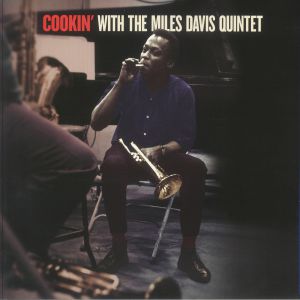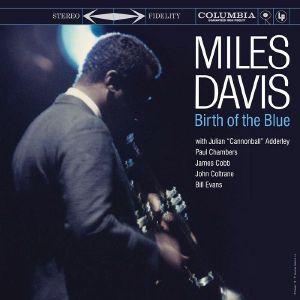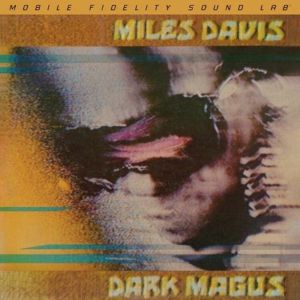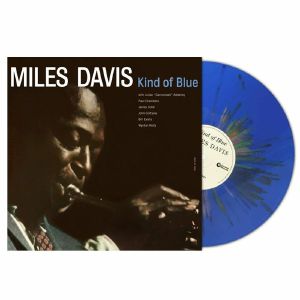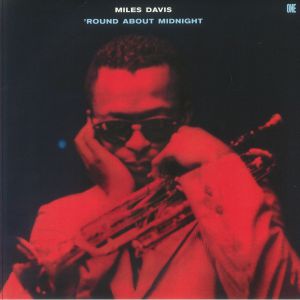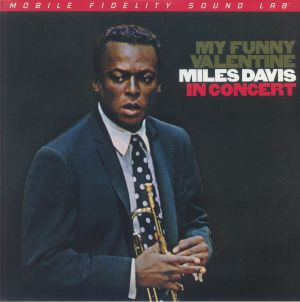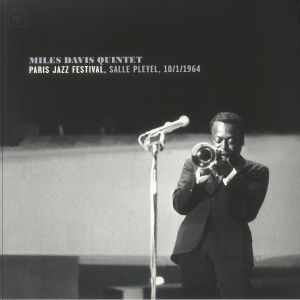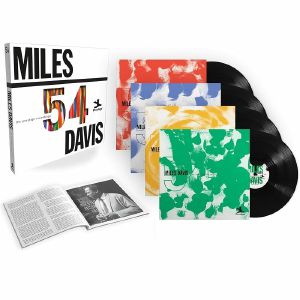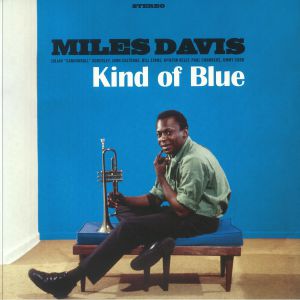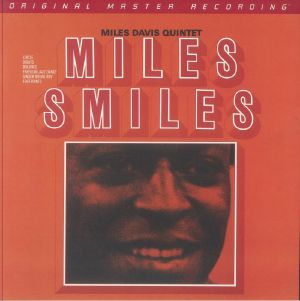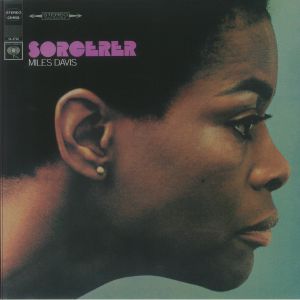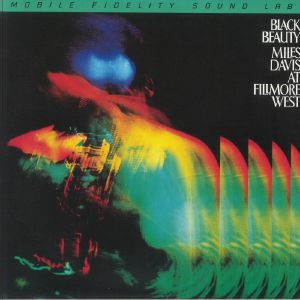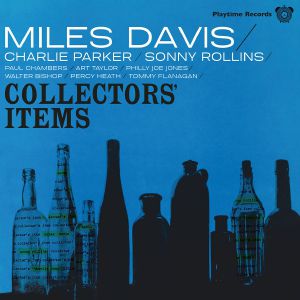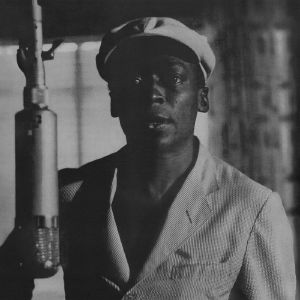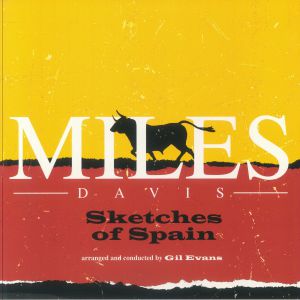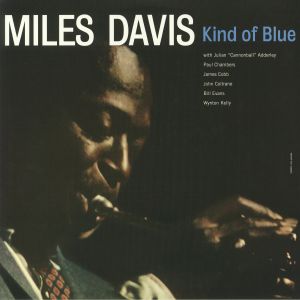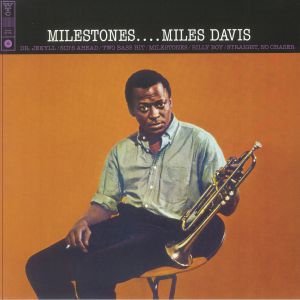Filter
Genre
在庫状況
Type
音楽
フォーマット
アーティスト
レーベル
Featured
リリースタイトル
値段
Back catalogue: All genres
Juno's full catalogue of All genres
アルバム
Cookin' With The Miles David Quintet (reissue) (180 gram translucent blue vinyl LP)
Cat: 350281. Rel: 07 Apr 25
Jazz
Review: Miles Davis' quintet was formed in 1955 and soon after began impressing the jazz world with the sort of invention that eventually saw them hailed as one of the greatest in history. Each member - including Miles on trumpet, John Coltrane on tenor sax, Red Garland on piano, Paul Chambers on bass and Art Taylor on drums - was a creative force in their own right. Cookin' proved that and came on Prestige as the first in a series of four albums, later followed by Steamin', Workin' and Relaxin'. These albums were recorded during two highly productive sessions in May and October of 1956 and the quintet's groundbreaking work explored a dynamic blend of improvisation, technical skill and innovative jazz exploration.
… Read more in stock $15.86
Review: Iconic recordings from 1959 blessed with s a fresh, vibrant energy. The opener, with its elegant trumpet lines and meticulous rhythm section, feels like a masterclass in restraintibuilding from delicate intricacies to full-blown, fluid improvisation. As the album progresses, each track shows Davis's intuitive connection with his bandmates, effortlessly weaving complexity into accessible melodies. The slow-burning 'Blue in Green' stands out, with its haunting beauty and rich, emotive depth. Throughout, the album is a showcase of Davis's transformative approach to jazz, fusing cool jazz elements with the raw emotional power that defined his later work. A definitive, timeless piece.
… Read more in stock $55.07
in stock $79.27
Dark Magus: Live At Carnegie Hall 1974 (limited gatefold numbered 180 gram audiophile vinyl 2xLP)
Cat: 198028 170314. Rel: 25 Feb 25
Jazz
Review: Captured live in 1974, this performance at Carnegie Hall showcases Miles Davis at the height of his electric fusion era, blending jazz with rock in a fierce, exploratory manner. The show features the monumental 'Moja' and 'Wili,' each spread across two parts, with the band improvising freely and building intricate, pulsating rhythms. Davis's trumpet and organ create a swirling, unpredictable sound, while the guitar work from Pete Cosey and Reggie Lucas adds texture and energy. Tracks like 'Tatu' and 'Nne' display Davis's shift towards African-inspired sounds, experimenting with complex rhythms and haunting melodies. This is a tour de force, an unfiltered snapshot of Davis's creative genius.
… Read more in stock $73.99
in stock $31.15
in stock $16.67
My Funny Valentine: In Concert (reissue) (limited numbered 180 gram audiophile SuperVinyl LP)
Cat: MFSV 1520. Rel: 03 Mar 25
Jazz
Review: As it is the month of love - or another overbearingly capitalist instruction to treat people for the sake of it, depending on your viewpoint - why no indulge in some loved up jazz from Miles Davis? My Funny Valentine captured delicate ballads and was met with immediate critical successes. It is an album that demonstrated profound emotion with minimal fuss and represents a high point in Miles Davis' early 1960s career, capturing the excitement and sound of a road-honed group at its peak. Herbie Hancock's piano intros, George Coleman's melodic tenor, Ron Carter's steady bass, and Tony Williams' unexpected drumming contributed to an unforgettable collective sound.
… Read more in stock $73.99
Paris Jazz Festival: Salle Pleyel 10/1/1964 ("french flag'" blue white & red striped vinyl 2xLP)
Cat: 198028 11341. Rel: 13 Dec 24
Jazz
Review: Miles Davis' performance at the Paris Jazz Festival, Salle Pleyel, on October 1, 1964, is one of the many pivotal moments he was involved with in jazz history. The live recording features Davis' "Second Great Quintet," including Herbie Hancock (piano), Ron Carter (bass), Tony Williams (drums) and Wayne Shorter (tenor saxophone). This quintet pushed the boundaries of jazz with its innovative approach to improvisation and rhythm and the concert showcases Davis' evolving sound as he transitioned from his earlier modal work into more abstract, avant-garde territory. The setlist features dynamic interpretations of jazz standards and Davis' originals, both highlighting the ensemble's remarkable chemistry and individual brilliance.
… Read more in stock $43.67
Miles '54: The Prestige Recordings (180 gram vinyl 4xLP + booklet in die-cut box)
Cat: 725725 0. Rel: 21 Nov 24
Jazz
Review: Craft Recordings' Miles '54: The Prestige Recordings is an excellent retrospective that has Miles Davis at a transformative period in his career. Spanning 20 tracks, this collection highlights the pivotal year of 1954, where Davis honed his signature sound and emerged as a leading figure in jazz. The album features contributions from luminaries like Sonny Rollins, Thelonious Monk, and Art Blakey, who together elevate the sessions to iconic status. The set includes insightful session notes by Dan Morgenstern and a thoughtful essay by Ashley Kahn, providing historical context and depth. The collection is a journey through Davis' evolving artistry, from the melodic 'Four' to the innovative 'Bags' Groove.' Tracks like 'Walkin'' and 'Oleo' reveal a confident, boundary-pushing musician on the brink of greatness, while his use of the cup mute foreshadows the cool, introspective sound that would define much of his later work. Miles '54 is not just a celebration of a milestone year in Davis' career but also a tribute to the enduring legacy of Prestige Records.
… Read more in stock $134.06
in stock $15.86
Miles Smiles (reissue) (B-STOCK) (gatefold 180 gram SuperVinyl LP)
Cat: MFSV 1515 (B-STOCK). Rel: 01 Jan 90
Jazz
B-STOCK: Sleeve damaged but otherwise in excellent condition
in stock $72.04
in stock $29.21
Black Beauty: Miles Davis At Fillmore West (B-STOCK) (limited numbered gatefold 180 gram audiophile vinyl 2xLP + booklet)
Cat: MFSL 2568 (B-STOCK). Rel: 01 Jan 90
Jazz
B-STOCK: Slight surface mark on the record sleeve
Review: ***B-STOCK: Slight surface mark on the record sleeve***
April 10, 1970. Miles Davis, fresh from his Jack Johnson sessions and with a new face in the band, soprano saxophonist Steve Grossman, take the stage at San Francisco's Fillmore West and set about sparking a revolution in jazz by fusing it with rock and funk elements. Captured on Black Beauty: Miles Davis at Fillmore West, this performance is one for the agesifull of explosive improvisation, raw energy and a palpable sense of transformation. The album, finally reissued on vinyl after years of being locked away in Japan, is a time capsule of a moment in jazz history where tradition was discarded and a new frontier was being built. With his usual crewiGrossman, Chick Corea on keys, Dave Holland on bass, Jack DeJohnette on drums, and Airto Moreira on percussioniDavis steered the ship into turbulent, unpredictable waters. It's all about the groove, the shifts in rhythm, and the untamed trumpet blasts that echo through the room like firecrackers. Tracks like 'Miles Runs the Voodoo Down' - from the milestone Bitches Brew album, which had come out a mere month before - and 'It's About That Time' tear apart the old jazz playbook, plunging deep into rock territory while still holding on to the open-ended freedom of improvisation. This is the raw, unfiltered jazz that would come to define the electric period of Davis' caree - a live-wire snapshot of a jazz legend finding new possibilities in real-time.
… Read moreApril 10, 1970. Miles Davis, fresh from his Jack Johnson sessions and with a new face in the band, soprano saxophonist Steve Grossman, take the stage at San Francisco's Fillmore West and set about sparking a revolution in jazz by fusing it with rock and funk elements. Captured on Black Beauty: Miles Davis at Fillmore West, this performance is one for the agesifull of explosive improvisation, raw energy and a palpable sense of transformation. The album, finally reissued on vinyl after years of being locked away in Japan, is a time capsule of a moment in jazz history where tradition was discarded and a new frontier was being built. With his usual crewiGrossman, Chick Corea on keys, Dave Holland on bass, Jack DeJohnette on drums, and Airto Moreira on percussioniDavis steered the ship into turbulent, unpredictable waters. It's all about the groove, the shifts in rhythm, and the untamed trumpet blasts that echo through the room like firecrackers. Tracks like 'Miles Runs the Voodoo Down' - from the milestone Bitches Brew album, which had come out a mere month before - and 'It's About That Time' tear apart the old jazz playbook, plunging deep into rock territory while still holding on to the open-ended freedom of improvisation. This is the raw, unfiltered jazz that would come to define the electric period of Davis' caree - a live-wire snapshot of a jazz legend finding new possibilities in real-time.
in stock $77.87
in stock $24.20
The Musings Of Miles (Original Jazz Classics Series) (180 gram vinyl LP with obi-strip)
Cat: CR 00854. Rel: 17 Apr 25
Jazz
Review: This early gem - in fact, it was the maestro's first ever 12" record - shows a masterful command of space and melody, spotlighting a warm, muted trumpet tone alongside a pared-down ensemble. Without a saxophone, the spotlight remains squarely on the lead, providing ample room for expansive solos and lyrical interpretations. Anchored by a stellar rhythm section featuring a buoyant bassist, impeccable pianist and dynamic drummer, the performances exude a relaxed yet precise energy. Highlights include a fresh, distinctive take on the Dizzy Gillespie classic 'A Night in Tunisia', where the group reimagines the piece with effortless ingenuity. Original compositions add further depth, with a witty riposte to a well-known standard and a contemplative piece that lingers in the listener's mind. A transitional moment for one of the all time greats, hinting at the greatness to come all the way back in 1955.
… Read morePlayed by: Juno Recommends Jazz
in stock $39.49
in stock $16.67
in stock $20.31
Black Beauty: Miles Davis At Fillmore West (limited numbered gatefold 180 gram audiophile vinyl 2xLP + booklet)
Cat: MFSL 2568. Rel: 04 Apr 25
Jazz
Review: April 10, 1970. Miles Davis, fresh from his Jack Johnson sessions and with a new face in the band, soprano saxophonist Steve Grossman, take the stage at San Francisco's Fillmore West and set about sparking a revolution in jazz by fusing it with rock and funk elements. Captured on Black Beauty: Miles Davis at Fillmore West, this performance is one for the agesifull of explosive improvisation, raw energy and a palpable sense of transformation. The album, finally reissued on vinyl after years of being locked away in Japan, is a time capsule of a moment in jazz history where tradition was discarded and a new frontier was being built. With his usual crewiGrossman, Chick Corea on keys, Dave Holland on bass, Jack DeJohnette on drums, and Airto Moreira on percussioniDavis steered the ship into turbulent, unpredictable waters. It's all about the groove, the shifts in rhythm, and the untamed trumpet blasts that echo through the room like firecrackers. Tracks like 'Miles Runs the Voodoo Down' - from the milestone Bitches Brew album, which had come out a mere month before - and 'It's About That Time' tear apart the old jazz playbook, plunging deep into rock territory while still holding on to the open-ended freedom of improvisation. This is the raw, unfiltered jazz that would come to define the electric period of Davis' caree - a live-wire snapshot of a jazz legend finding new possibilities in real-time.
… Read more in stock $84.83
Played by: Juno Recommends Jazz
in stock $13.63
in stock $18.36

 USD
USD






